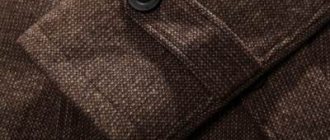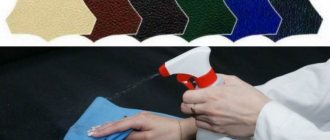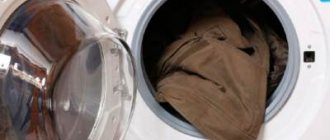A school backpack is an essential attribute of most students. Daily use by a child cannot but affect the appearance of the bag.
Even expensive and very high-quality backpack models need to be washed over time. There are rules by following which you can refresh its appearance and extend its service life.
Is it possible and how to wash a school backpack (frame, with an orthopedic back, etc.) in an automatic washing machine and by hand? Details are in the article.
Is it possible or not?
There should be a label on the inside of the backpack indicating whether the backpack can be washed and what types of processing of the product are allowed.
Depending on the model, the following types of cleaning are possible:
- manual;
- in the washing machine;
- dry;
- dry cleaning
The latter option involves completely eliminating self-processing and transferring washing to professionals.
Dry cleaning is often used as an intermediate step before the main wash . But for some types of backpacks, it is the only way to put things in order.
To maintain a school backpack in hygienic condition, it is recommended to wash it once every 3 months.
Keeping it clean for long-term use
If you frequently machine wash your backpack, it may harm it. To avoid washing too often, there are a few precautions you should take:
- do not collect various rubbish inside, empty pockets, send everything unnecessary directly to the trash bin;
- do not place the bag on the ground, you can hang it;
- keep the inside clean (for example, in school backpacks, shoes and other items can be wrapped in a bag);
- Pens, felt-tip pens, drinks, and other liquids may cause stains that are difficult to remove, so you should take care of additional packaging;
- Wet wipes will help remove fresh stains and dirt.
By following these tips you can significantly increase the life of your backpack.
Preparing for washing
Preparing to process a child's backpack begins with completely emptying it of its contents. After this, you need to shake it out, turning it upside down with the locks open.
If possible, clean the inside with a vacuum cleaner. It would be a good idea to inspect your backpack for damage.
If they exist, they must be eliminated in advance:
- fix zippers;
- trim hanging threads;
- sew up torn areas.
For dusty backpacks, the top layer of dirt can be removed by walking along the outside with a damp sponge.
Pronounced stains from food, grass, ink, etc. deserve special attention. They must be processed before the main wash cycle. This can be done with a stain remover that does not contain chlorine.
The product is applied with a brush with soft bristles and rubbed gently. If the stains are small, an old toothbrush will help to rub them out.
All removable elements, including keychains, must be removed before washing . They are cleaned separately.
If the backpack is then sent into the drum of the washing machine, the zippers of the compartments should be fastened. For hand washing, on the contrary, it is advisable to unfasten them.
How to remove various contaminants and unpleasant odors
If you find stains on your shoulder bag, we will tell you several effective ways to deal with them.
- When dealing with old stains from soot, grease or ink stains, simple laundry soap will help. It is as loyal as possible to most types of fabric and gets rid of stains without harming the color. Wash the stain with laundry soap and leave for 10-15 minutes, then rinse with warm water.
- For particularly delicate fabrics, use foam whipped from professional cleaning products or, if they are not available, regular dishwashing products. Using a toothbrush or clothing brush, apply this foam to the dirt and rub in well. Then rinse the bag in warm, but not hot, water.
- To clean natural leather, it is better to use a damp cloth. This material does not absorb various contaminants well and is easily cleaned with a vacuum cleaner and wiping with a cloth.
To remove grease stains, use one of the following methods:
- First, cover the stain with table salt. If the stain has already soaked in, apply a little water.
- The easiest way to remove grease stains is with regular ammonia. Apply it to cotton wool and rub into the stain until it disappears completely.
- Dishwashing detergents can help remove fresh stains. Rub them into the stain, then rinse with warm, running water.
- If your child gets an ink stain, there is no reason to worry. Take any alcohol-containing solution (vodka, alcohol, etc.) and blot the stain with it using a cotton swab. Do not rub it in under any circumstances, just soak it. Repeat the procedure until the stain is completely removed.
- Dried gum can be removed using the refrigerator. Place your briefcase in the freezer until the gum is completely frozen, after which you can simply scrape it off. This method also works for plasticine.
- The best way to remove dust from a backpack is to simply knock it out. Remove all contents from the bag, then open all zippers and turn them upside down. Then beat the backpack with your palm or a special knockout stick.
After removing contaminants, the question often arises: “how to get rid of the odors” that have permeated the backpack.
Manually
Hand washing a child's school bag is less common than washing it in a machine. If there are difficult stains on the outside or inside, they are treated with a stain remover.
After half an hour, proceed to the main processing:
- Warm water is drawn into a large basin or directly into the bathtub.
- Dilute the detergent.
- Dipping a backpack into the water.
- Using a sponge, clean the briefcase from the outside and inside. It is necessary to act methodically, treating zone by zone.
- After finishing cleaning, you need to rinse the bag on both sides with non-hot water to completely remove any remaining detergent.
- Dry.
What can't be washed?
Some accessories made from specially selected or special materials cannot be washed. These include bags and backpacks with a molded plastic base, silicone or with silicone inserts, wool or with woolen details, as well as all types of transparent accessories.
For each individual material, manufacturers indicate acceptable cleaning methods on the label or insert. If the recommendations are not followed, the accessory may lose its appearance and properties. For stains, you can choose a stain remover for spot application based on the type of material.
In the washing machine
Washing in a washing machine is a very convenient option that allows you to quickly and effectively remove dirt from your backpack and refresh the appearance of the item.
Such processing must be carried out in compliance with all rules:
Prepare the bag for washing. Make sure all zippers are closed.- Pour the prepared detergent into the washing powder compartment.
- Set the “delicate wash” mode.
- Make sure that the water heating temperature is no more than +40ºС.
- For backpacks of complex shape, with seals on the back, it is advisable to exclude spinning.
- Start the wash.
- At the end of the wash cycle, remove the backpack from the drum.
- Wipe the inside and outside of the product. This will allow the bag to dry faster and prevent mold from forming.
- Dry.
Washing in a special mesh will help prevent damage to the backpack and drum.
Studying the manufacturer's recommendations
Any backpack must have a label from the manufacturer in the inner cavity. Almost always, this label contains information with instructions regarding washing, drying, ironing, which extends the life of the product and preserves its original appearance. The label is located in the side seam area. The explanation of the information on the label is available on the Internet; you just need to follow the recommendations.
It is important to remember that in the case of rough mechanical impact and aggressive processing mode, the structure of the fibers and the shape of the product loses its original properties. The water repellency function is disrupted and the threads will fray along the main seams. To prevent this, unauthorized choice of temperature and push-up strength is not recommended. It is unreasonable to expect a backpack to withstand elevated temperatures and twisting.
If there is no label with information on the bag, you should choose a gentle mode that does not exceed 400 rpm. Available for hand or delicate wash. Cleaning agents are selected as for delicate fabrics.
Dry cleaning
Dry cleaning will help tidy up a backpack that cannot be washed in water. The following products fall into this category:
- made of natural or artificial leather;
- vinyl;
- containing special impregnations;
- having non-removable elements that are prohibited from getting wet.
For bags that cannot be immersed in water, cleaning can be done with a soft brush and a mild soap solution. If the material is leather, then it may be enough to refresh the surface with a damp cloth.
A good assistant in cleaning a backpack made of suede, leather or textiles are cleaning foams, which can be purchased in specialized departments of household chemicals.
Among them worthy of attention:
- Silver;
- Liqui Moly;
- Saphir;
- Salton;
- Twist and others.
The main requirement is to avoid excessive moisture in the material.
How does the material affect the process?
School bags can be made from various materials and have a complex design . For example, a compacted back, a large number of small parts. Most models are made from several types of materials, the features of which must be taken into account when choosing a washing method:
- Leather, suede, vinyl .
School backpacks made of vinyl, artificial or natural leather, as well as suede ones are prohibited from being washed. Their cleaning should be as gentle as possible - without significant moisture and intense exposure. - Denim . This type of bag should be washed separately from other items, as denim fades easily. The spin cycle in the washing machine should be set to minimum.
- Synthetics. Synthetic material is used very often for school bags and backpacks. In most cases, such fabric tolerates washing well.
Cleaning the backpack cavity
Before loading the product into the washing machine, it is checked for the presence of small things inside (coins, keys). Such measures are necessary to avoid negative impacts on the machine and the thing itself. If there are coins inside, they can oxidize in an aqueous environment, which can cause stains and rust to appear on the fabric. If there are crumbs and other debris, they need to be shaken out or cleaned with a vacuum cleaner.
Features of processing frame backpacks with an orthopedic back
Many backpack models, especially those designed for younger schoolchildren, have special seals on the back. These may include plastic and metal plates. The complex design is designed to ensure that the backpack maintains its shape.
If all these elements are removable, then they are removed before washing in the machine. Otherwise, the backpack cannot be placed in the drum.
Frame seals require careful handling. For them, spinning and twisting should be excluded.
The video will show you how to wash a frame backpack:
Proper drying
After washing by any method, the briefcase needs to be dried. The best choice is to do it in natural conditions.
Procedure:
- After washing, turn the bag over so that the remaining water pours out from the inside;
- Use a moisture-absorbing cloth to blot the outside and inside;
- turn the product upside down and use clothespins or straps to secure the bag in this position on the rope.
During the drying process, the pockets should remain open to allow faster drying.
If you need to dry the bag faster, you can fill it with crumpled paper that absorbs moisture . You need to do the same with pockets. As the paper gets wet, it is recommended to replace it with a new one.
The drying process must be carried out thoroughly. A poorly dried item can not only acquire an unpleasant odor, but also become a source of mold.
Proper drying
The backpack is dried in a well-ventilated area or outside. It is prohibited to use hair dryers or heating devices for drying.
If there is a risk that the backpack will change its shape when hanging, then while drying it is better to place it on a stool, which is placed in the bathroom. It is recommended to open all compartments, zippers, and pockets so that air can penetrate inside and the briefcase dries faster, but this should not be done immediately, but after most of the moisture has gone. This will avoid distortion of the zippers and the entire structure.











